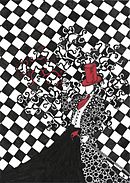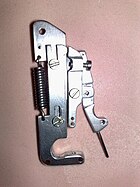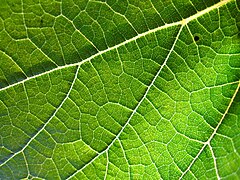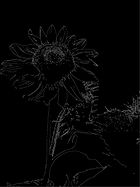Deriche edge detector
来源:互联网 发布:围巾的各种围法 知乎 编辑:程序博客网 时间:2024/06/09 14:41
http://en.wikipedia.org/wiki/Deriche_edge_detector
Deriche edge detector is an edge detection operator developed by Rachid Deriche in 1987. It's a multistep algorithm used to obtain an optimal result of edge detection in a discrete two-dimensional image. This algorithm is based on John F. Canny's work related to the edge detection (Canny's edge detector) and his criteria for optimal edge detection:
- Detection quality – all existing edges should be marked and no false detection should occur.
- Accuracy - the marked edges should be as close to the edges in the real image as possible.
- Unambiguity - a given edge in the image should only be marked once. No multiple responses to one edge in the real image should occur.
For this reason, this algorithm is often referred to as Canny-Deriche detector.
Differences between Canny and Deriche edge detector
Deriche edge detector, like Canny edge detector, consists of the following 4 steps:
- Smoothing
- Calculation of magnitude and gradient direction
- Non-maximum suppression
- Hysteresis thresholding (using two thresholds)
The essential difference is in the implementation of the first two steps of the algorithm. Unlike the Canny edge detector, Deriche edge detector uses the IIR filter in the form:
The filter optimizes the Canny criteria. As is evident from the preceding formula, the most effective filter is obtained when the value of  approaches 0. Such filter then uses the formula:
approaches 0. Such filter then uses the formula:
The advantage of such a filter is that it can be adapted to the characteristics of the processed image using only one parameter. If the value of α is small (usually between 0.25 and 0.5), it results in better detection. On the other hand, better localization is achieved when the parameter has a higher value (around 2 or 3). For most of the normal cases parameter value of around 1 is recommended.
Using the IIR filter makes sense especially in cases where the processed image is noisy or a large amount of smoothing is required (which leads to large convolution kernel for FIR filter). In these cases, the Deriche detector has considerable advantage over the Canny detector, because it is able to process images in a short constant time independent of the desired amount of smoothing.
[edit]Deriche detector implementation
It's possible to separate the process of obtaining the value of a two-dimensional Deriche filter into two parts. In first part, image array is passed in the horizontal direction from left to right according to the following formula:
and from right to left according to the formula:
The result of the computation is then stored into temporary two-dimensional array:
The second step of the algorithm is very similar to the first one. The two-dimensional array from the previous step is used as the input. It is then passed in the vertical direction from top to bottom and bottom-up according to the following formulas:
The description of the algorithm implies that the processed rows and columns are independent of each other. As a result, the solution based on the IIR filter is often employed in embedded systems and architectures, which support a high level of parallelization, such as NVIDIA CUDA.





 0
0

 1
1

 -1
-1

 0
0


 0
0

 1
1

 -1
-1

 0
0








 1
1

The mathematical properties of the algorithm are often used in practical implementation of the Deriche detector. It is sufficient to implement only one part of the algorithm, which is then called twice, while performing a transposition of the resulting matrix.
low treshold = 20
high treshold = 40α = 4.0
low treshold = 50
high treshold = 90α = 0.8
low treshold = 26
high treshold = 41α = 1.0
low treshold = 15
high treshold = 35
- Deriche edge detector
- Edge detector
- canny edge detector
- Frei-chen edge detector
- Frei-Chen edge detector
- Compass Edge Detector
- Roberts Cross Edge Detector
- Canny Edge Detector
- Canny Edge Detector
- Canny Edge Detector
- Frei-Chen edge detector
- canny edge detector
- Canny Edge Detector
- Edge Detector ----------Marr Hildreth 算法
- Sobel Edge Detector 边界检测算法
- Canny边缘检测器-- The Canny Edge Detector
- C64x+ iUniversal Codec Creation - from memcpy to Canny Edge Detector
- C64x+ iUniversal Codec Creation - from memcpy to Canny Edge Detector
- Android 非UI线程使用View.post()方法一处潜在的内存泄漏
- this指针
- 解析虚拟平台关键技术:虚拟交换机
- Java实现Socket5代理服务器
- rsync使用笔记
- Deriche edge detector
- 同步新浪Error: 40009:Error: system error, does multipart has image?解决方案
- 使用Intent安装apk的方法
- 什么是云计算
- edit的输入类型 android:inputtype
- Java文字图像识别(1)[88250原创]
- 详解abstract class和interface的本质
- 怎样扩充你的人脉
- 如何设置无线路由器提高迅雷下载速度






















